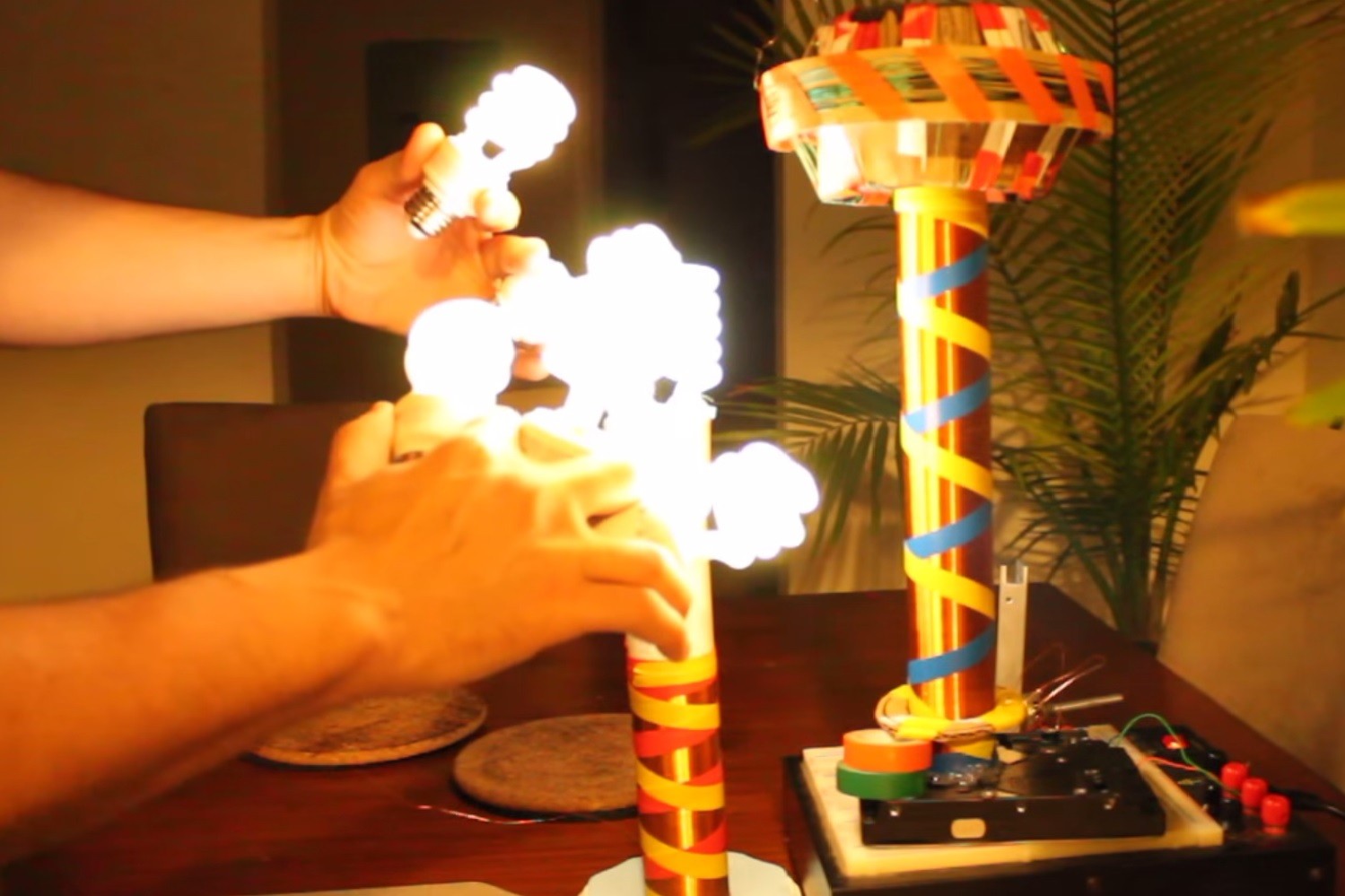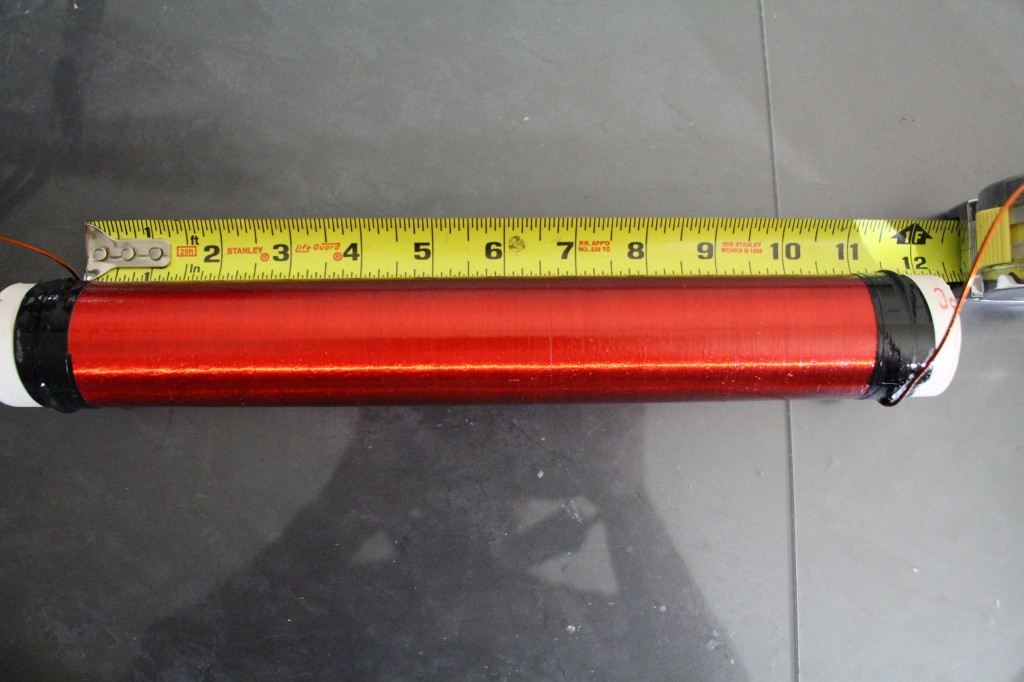L2 may consist of 500-2000+ turns of any magnet wire tightly wrapped on PVC , between half an inch and 3 inches in diameter. The longer the final the length of the wire, the more internal resistance it will have. TeslaTronix Tesla Coils use Inch and a quarter PVC. Within reason, the wider the ratio of windings between the primary and secondary, the grater the final output voltage of the tower. There is no connection from L2 to ground; only to the resistor, base, diode node. It is recommended to immediately spray with lacquer your L2 or wrap it in electrical tape double helix as changes in temperature will change the length of your coil, and cause imperfections.


So I’m new at the whole tesla coil scene and I don’t know much about them at the moment. I ordered a kit (via kickstarter donation) just because I love the idea of wireless power and thought this would be a good way for me to experiment and learn what goes into making a tesla coil and how they work. Can someone explain whether or not for the L2 you can have a multi layer coil and why or why not?
Single layer L2 only. Avoid overlaps of any kind. What you see in the picture is what you want. The circuit will not function with a multi layer L2. As it stands, it is acting as a basic transformer being driven by a blocking oscillator. More layers of windings overlapping will not increase output, but hut it.
I purchased you kit with the 4″ sphere from an eBay seller that did not build your kit but sold it to me! Winding the secondary for the first time things did work out OK but I do have a suggestion. About every inch or so, take a toothpick with a small amount of “superglue” and touch it to the winding and then continue with the next inch or so. I only did that to the ends so they would not unravel, but doing it along the way sure might help others. You will always do a better job the second time around! I’m not a kid any more but a retired GM EV1 electric vehicle electronic engineering technician – and I am having a great time with building my first Tesla Coil! Many thanks for a great site. Very best wishes.
hi admin….can you please send me the documents an pdf… i will be great help from you for me
Hi admin..!!
the wire which is wrapped on the PVC pipe has two ends,
so where these two ends should be connected.?
& is there any connection between toroid &
L2.??
The bottom end of L2 should be connected to the base node of the transistor, and the top end should be connected to the top load (sphere, toroid, ect).
The wire broke about halfway through winding my secondary coil. I have only what was provided. Can I splice it or should I start over?
You can try to rejoin it, and it may work, but for best performance a continuous strand is best.
I do know this page has been inactive for a while, and sorry to bump but, why is the negative terminal not connected to ground even though it significantly improves performance? (connecting the secondary directly to ground prevents it from working, however connecting the negative terminal to ground improves performance greatly.)
The circuit diagram the kits ship with with shows an earth ground. The circuit will function without an egnd, but will perform much better with one.
Hi everyone i finish to build the secondary now can I “paint”, cover with a layer of the common glue (vinavil) or i can’t?
I am not familiar with that particular brand. However for my Tesla coil L2s I generally use a spray on type like Minwax 33333 upon immediately finishing the winding (and sometimes halfway through), then if I need extra protection I will use a foam brush and apply several coats of Minwax 63015 or similar.